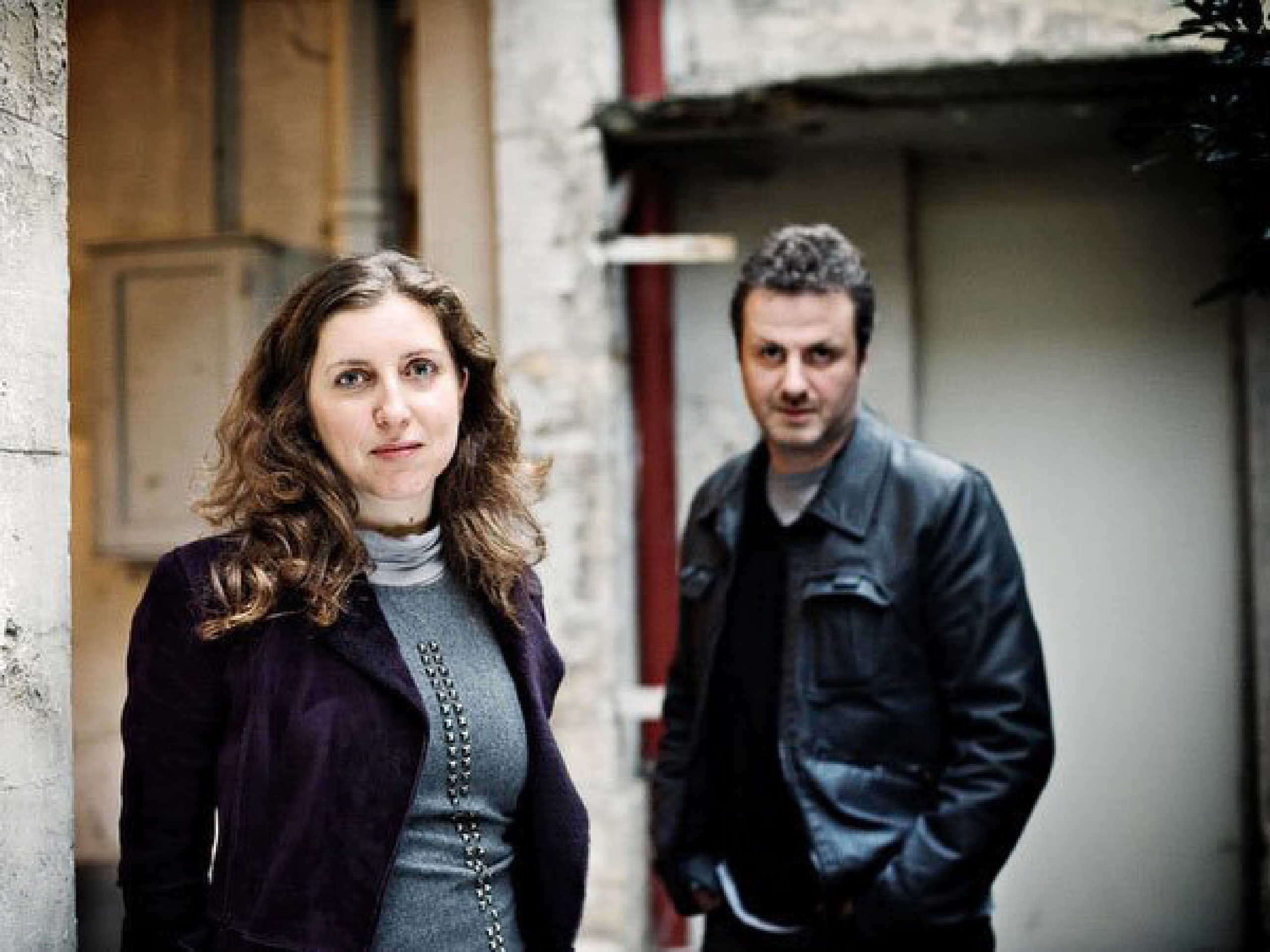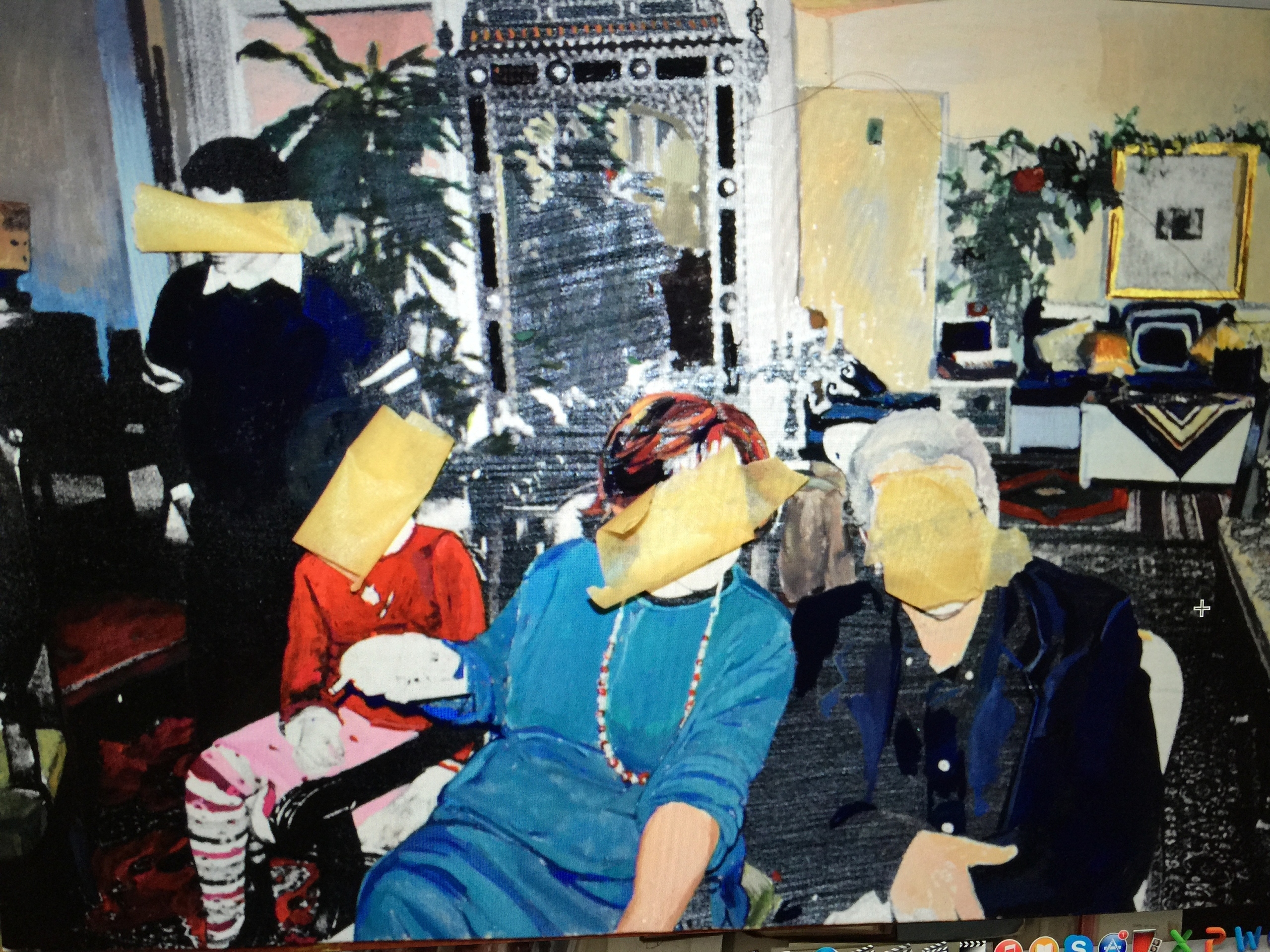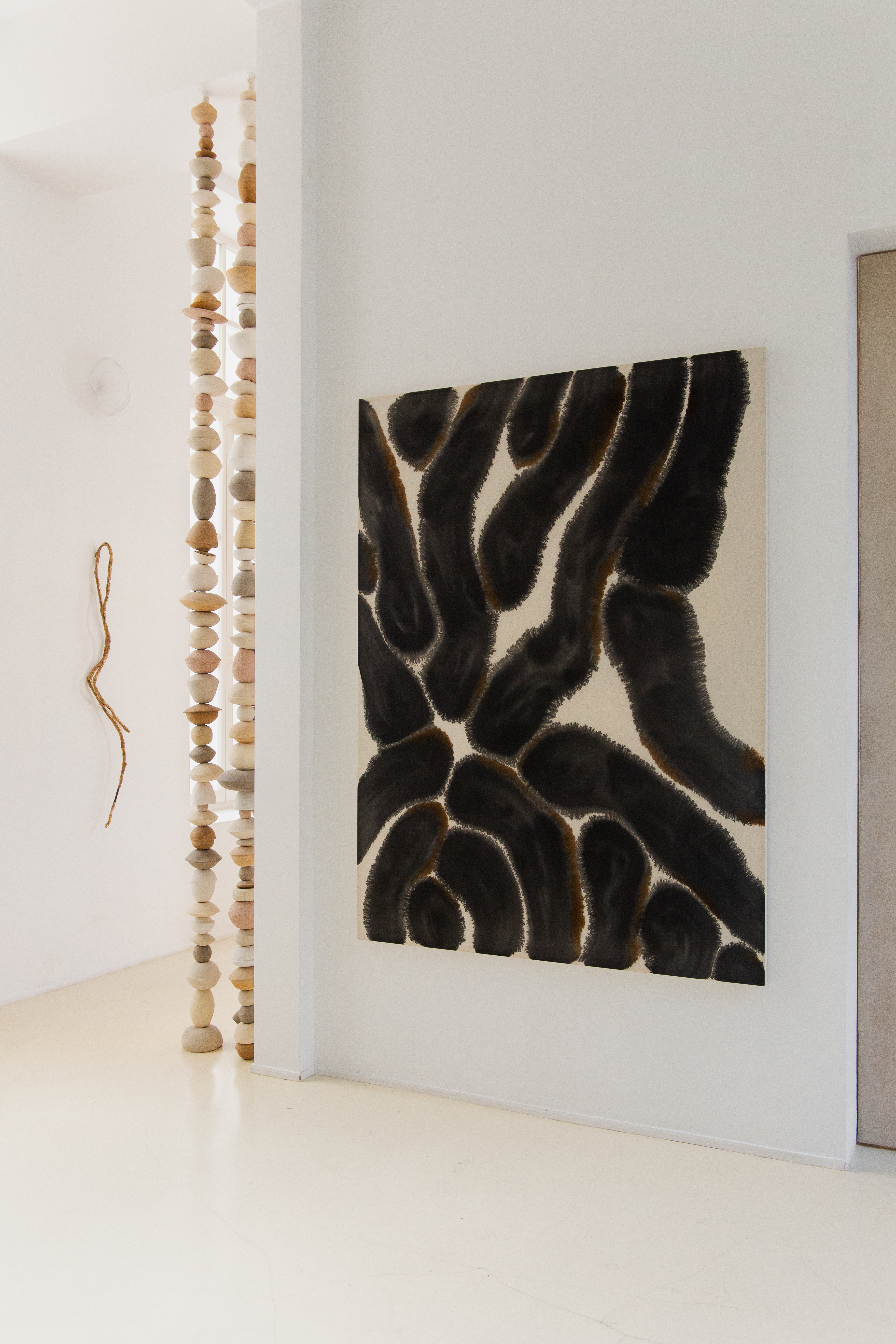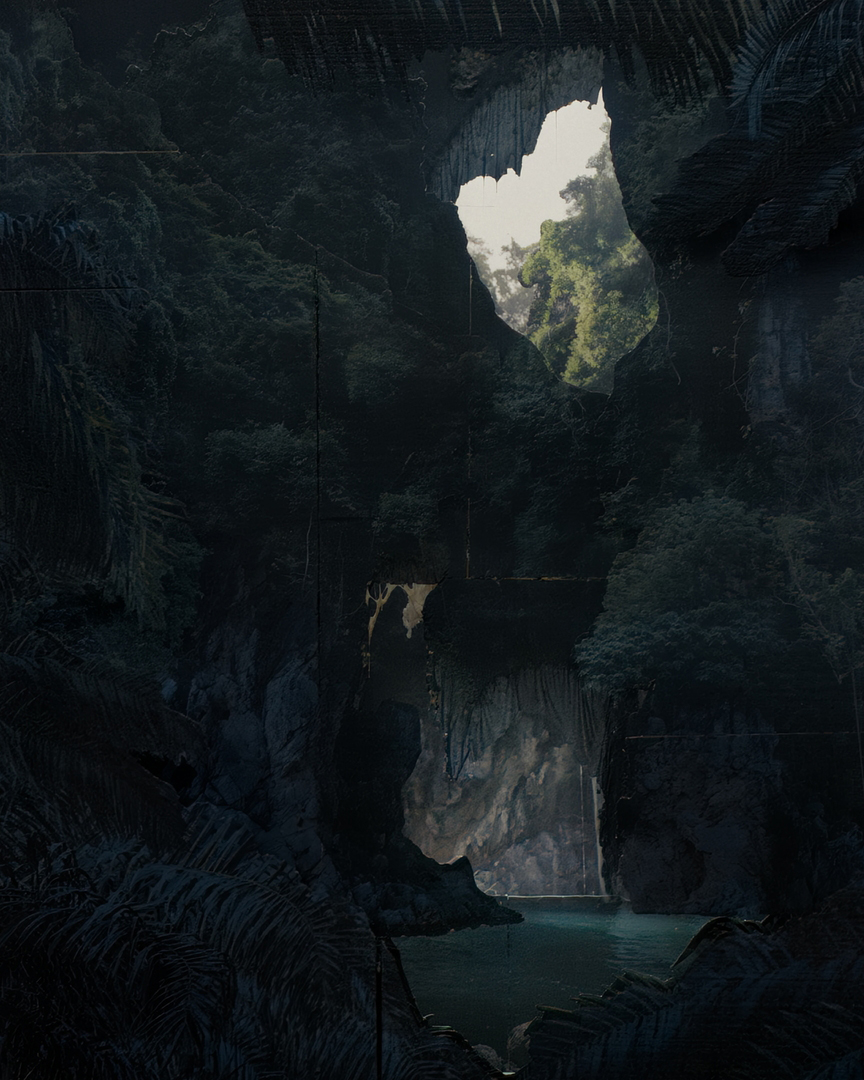


21.06.2018
La mémoire des glaciers, Zone Yonaguni, Si les heures m’étaient comptées
by ANGELIKA MARKUL
Screening of 3 films followed by an encounter in french with the artist moderated by Victor Mazière.
Memory of glaciers (2017) 10’51’’
Memory of Glaciers is a myth at the confluence of science and fiction, the first component of a trilogy on the origin and existence of Man until his evolution. The film’s starting point is the discovery of the Churyumov–Gerasimenko comet, which might contain an explanation of the origin of life on Earth. The video recounts the tragic melting of a glacier in the south of Patagonia, evoking an amputation of a gangrened body. Memory of Glaciers follows a reflection which started more than ten years ago on questions such as memory, bodies and places, destruction and the cycle of life.
Logbook: Yonaguni aera (2016) 19’47’’
A lost continent or the work of human hands? The thesis that the Yonaguni Monument is the work of human hands stimulates the imagination and claims have arisen stating that this is a fragment of a lost continent, the mythical land of Mu. In 1986-7, underwater off the coast of the Japanese Yonaguni Island, a stone building was discovered with a length of 250 m and a height of 25 m, resembling a stepped pyramid. In later studies, smaller objects were uncovered: a stone ring road, a sculpture resembling a human head or a giant turtle. The complex looked like a small town, wherein the stepped pyramid, called the Monument, could have performed the function of a citadel. At least that is how Professor Masaaki Kimura, a physicist at the University of the Ryukyus, interpreted this find. He also claimed that the complex was formed 10 000 years ago, when these areas were not yet flooded by the sea. Another geologist, Robert Schoch, a professor at the University of Boston, after implementing on site testing, challenged the assertion that the object was products of human hands, seeing them as the work of the forces of nature. The controversy has not yet been resolved in the scientific world.
If the hours were already counted (2016) 11’47’’
In April of 2000, during a routine run 300 meters underground in the lead and silver mine in Naica in Mexico, two miners made a surprising discovery. They accidentally dug into an underground cave, and what they saw left them breathless. The cave was filled with selenite crystals, the largest of which were 11 meters long and were 5 times higher than those found in earlier discoveries. It is believed that these giants started to crystallize between 500 000 and 200 000 years ago. Lethal conditions prevail in the cave – the temperature ranges from 45 to 50° C and the humidity reaches 90-100%. A group of scientists from various fields formed the Naica Project to take advantage of all the possibilities to explore the past, which opened with the discovery of the cave.
One of the main aims was to search for primitive life forms. The crystals, as a result of the removal of water from the cave, were exposed to the risk of collapse due to changes in conditions. It is highly likely, however, that the mine will cease the costly pumping of hectoliters of water, restoring the cave’s original conditions and closing access to the interior of the cave.Those who visited the Crystal Cave describe their experience as an encounter with something unearthly. The extraordinary beauty and deadly conditions determine this extraordinary experience and, more specifically, allow for a way to reach the limits of survival in terms both biological and aesthetic.
Angelika Markul (1977) is a French-Polish artist, based in Paris. She graduated from the Beaux Art de Paris (ENSBA), multimedia section in the studio of Christian Boltanski. Her artistic practice focuses on missing, unknown and dangerous places. She recently won the Coal Prize 2016 , which honors an artist whose work is linked to art and environment. She is also the winner of the Sam Art Prize 2013.
Victor Mazière (1971) is an independent french art critic, specialized in aesthetic theory and contemporary art. He is a member of C-E-A (Commissaires d’Exposition Associés).
Memory of glaciers (2017) 10’51’’
Memory of Glaciers is a myth at the confluence of science and fiction, the first component of a trilogy on the origin and existence of Man until his evolution. The film’s starting point is the discovery of the Churyumov–Gerasimenko comet, which might contain an explanation of the origin of life on Earth. The video recounts the tragic melting of a glacier in the south of Patagonia, evoking an amputation of a gangrened body. Memory of Glaciers follows a reflection which started more than ten years ago on questions such as memory, bodies and places, destruction and the cycle of life.
Logbook: Yonaguni aera (2016) 19’47’’
A lost continent or the work of human hands? The thesis that the Yonaguni Monument is the work of human hands stimulates the imagination and claims have arisen stating that this is a fragment of a lost continent, the mythical land of Mu. In 1986-7, underwater off the coast of the Japanese Yonaguni Island, a stone building was discovered with a length of 250 m and a height of 25 m, resembling a stepped pyramid. In later studies, smaller objects were uncovered: a stone ring road, a sculpture resembling a human head or a giant turtle. The complex looked like a small town, wherein the stepped pyramid, called the Monument, could have performed the function of a citadel. At least that is how Professor Masaaki Kimura, a physicist at the University of the Ryukyus, interpreted this find. He also claimed that the complex was formed 10 000 years ago, when these areas were not yet flooded by the sea. Another geologist, Robert Schoch, a professor at the University of Boston, after implementing on site testing, challenged the assertion that the object was products of human hands, seeing them as the work of the forces of nature. The controversy has not yet been resolved in the scientific world.
If the hours were already counted (2016) 11’47’’
In April of 2000, during a routine run 300 meters underground in the lead and silver mine in Naica in Mexico, two miners made a surprising discovery. They accidentally dug into an underground cave, and what they saw left them breathless. The cave was filled with selenite crystals, the largest of which were 11 meters long and were 5 times higher than those found in earlier discoveries. It is believed that these giants started to crystallize between 500 000 and 200 000 years ago. Lethal conditions prevail in the cave – the temperature ranges from 45 to 50° C and the humidity reaches 90-100%. A group of scientists from various fields formed the Naica Project to take advantage of all the possibilities to explore the past, which opened with the discovery of the cave.
One of the main aims was to search for primitive life forms. The crystals, as a result of the removal of water from the cave, were exposed to the risk of collapse due to changes in conditions. It is highly likely, however, that the mine will cease the costly pumping of hectoliters of water, restoring the cave’s original conditions and closing access to the interior of the cave.Those who visited the Crystal Cave describe their experience as an encounter with something unearthly. The extraordinary beauty and deadly conditions determine this extraordinary experience and, more specifically, allow for a way to reach the limits of survival in terms both biological and aesthetic.
Angelika Markul (1977) is a French-Polish artist, based in Paris. She graduated from the Beaux Art de Paris (ENSBA), multimedia section in the studio of Christian Boltanski. Her artistic practice focuses on missing, unknown and dangerous places. She recently won the Coal Prize 2016 , which honors an artist whose work is linked to art and environment. She is also the winner of the Sam Art Prize 2013.
Victor Mazière (1971) is an independent french art critic, specialized in aesthetic theory and contemporary art. He is a member of C-E-A (Commissaires d’Exposition Associés).









